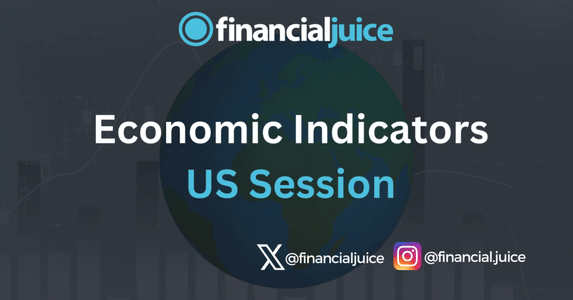
Week Ahead: Economic Indicators (US)
Hey, Traders!
For the May 6th week, here is a list of all of the major economic indicators being released during the US Session, with a brief synopsis of what they represent and what to possibly expect from the markets in reaction.
Wednesday 8th May
10:30 ET
Weekly EIA Crude Oil Inventories
The weekly Energy Information Administration inventories report provides data on the levels of crude oil, gasoline, and distillate inventories in the United States.
It’s an indicator of supply and demand dynamics in the oil market, influencing oil prices and trading decisions.
What to Expect
If inventories come in higher than expected, this could mean there is less demand and higher supply in the energy sector.
This could then lead to weakness in Crude Oil.
The opposite could also be expected if it comes in lower.
Thursday 9th May
08:30 ET
US Weekly Initial and Continuing Jobless Claims
The US Weekly Initial and Continuing Jobless Claims report provides data on the number of individuals who have filed for unemployment benefits for the first time (initial claims) and those who continue to receive unemployment benefits (continuing claims) in the United States.
These figures offer insights into the labor market’s health, indicating trends in job losses and unemployment rates.
What to Expect
If initial and continuing jobless claims come in higher than expected, this shows that there are more people filing for unemployment benefits in the US.
This could lead to strength in US stocks, and weakness in the dollar because it could be a downside risk to inflation.
The opposite could also be true if it came in lower than expected.
Friday 10th May
08:30 ET
Canadian Employment Change
The Canadian Employment Change is a monthly economic indicator that measures the net change in the number of people employed in Canada over a specific period.
It reflects the overall health of the Canadian labor market and is an important gauge of economic activity.
Positive employment changes indicate growth and potential strength in the economy, while negative changes suggest contraction or weakness.
What to Expect
If Canadian employment change comes in hotter than expected, this could show potential strength in the economy.
This could lead to weakness in the Canadian Dollar, and strength in Canadian stocks.
The opposite could also be expected.
Canadian Unemployment Rate
The Canadian unemployment rate represents the proportion of the workforce actively seeking employment but currently without a job. Released monthly by Statistics Canada, it serves as an indicator of the country’s economic health and labor market dynamics.
Lower rates typically signify a robust economy, while higher rates suggest economic difficulties.
What to Expect
If the unemployment rate rises, it suggests a weaker economy and a downside risk to inflation, as such, the Canadian dollar will likely weaken and Canadian stocks will strengthen.
The inverse is true for a drop in the rate.
10:00 ET
University of Michigan Sentiment
The University of Michigan Consumer Sentiment Index measures the confidence of US consumers in the economy.
It is based on a survey that assesses consumers’ perceptions and expectations regarding their personal finances, business conditions, and overall economic prospects.
A higher sentiment index indicates increased confidence, which can positively impact consumer spending and economic activity, while a lower index may suggest reduced confidence and potential economic caution.
What to Expect
Consumer sentiment is watched by markets to assess consumer resilience in a high-interest-rate environment. Elevated sentiment may suggest strong demand, potentially leading to inflationary pressures, but it could also signal consumer resilience, reducing recession fears.
The 1 & 5-year inflation expectations accompanying the sentiment data is also important to traders.
Higher inflation expectations may delay Fed rate cuts, affecting US stocks negatively and strengthening the dollar.





